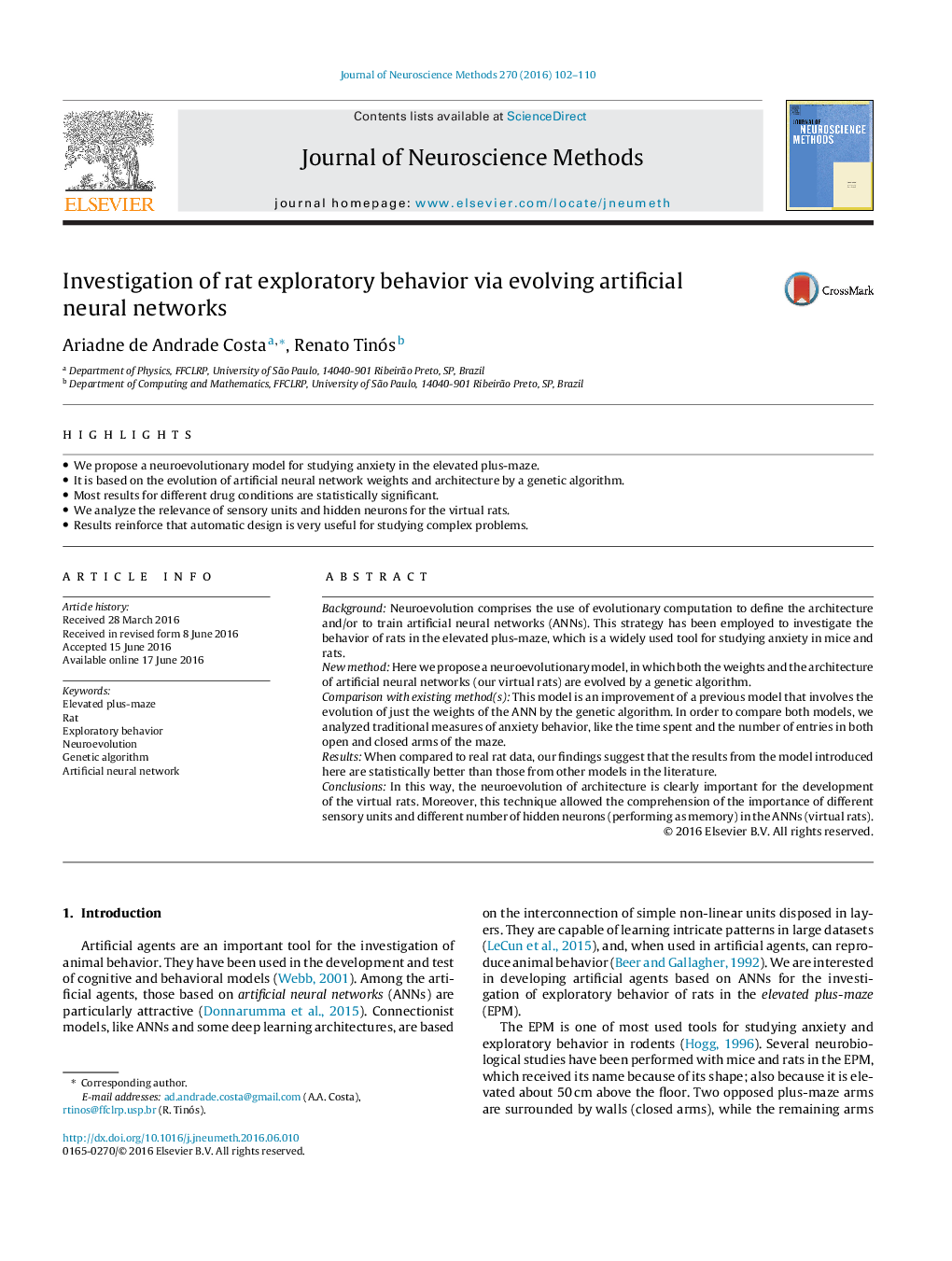| کد مقاله | کد نشریه | سال انتشار | مقاله انگلیسی | نسخه تمام متن |
|---|---|---|---|---|
| 6267576 | 1614599 | 2016 | 9 صفحه PDF | دانلود رایگان |
- We propose a neuroevolutionary model for studying anxiety in the elevated plus-maze.
- It is based on the evolution of artificial neural network weights and architecture by a genetic algorithm.
- Most results for different drug conditions are statistically significant.
- We analyze the relevance of sensory units and hidden neurons for the virtual rats.
- Results reinforce that automatic design is very useful for studying complex problems.
BackgroundNeuroevolution comprises the use of evolutionary computation to define the architecture and/or to train artificial neural networks (ANNs). This strategy has been employed to investigate the behavior of rats in the elevated plus-maze, which is a widely used tool for studying anxiety in mice and rats.New methodHere we propose a neuroevolutionary model, in which both the weights and the architecture of artificial neural networks (our virtual rats) are evolved by a genetic algorithm.Comparison with existing method(s)This model is an improvement of a previous model that involves the evolution of just the weights of the ANN by the genetic algorithm. In order to compare both models, we analyzed traditional measures of anxiety behavior, like the time spent and the number of entries in both open and closed arms of the maze.ResultsWhen compared to real rat data, our findings suggest that the results from the model introduced here are statistically better than those from other models in the literature.ConclusionsIn this way, the neuroevolution of architecture is clearly important for the development of the virtual rats. Moreover, this technique allowed the comprehension of the importance of different sensory units and different number of hidden neurons (performing as memory) in the ANNs (virtual rats).
Journal: Journal of Neuroscience Methods - Volume 270, 1 September 2016, Pages 102-110
